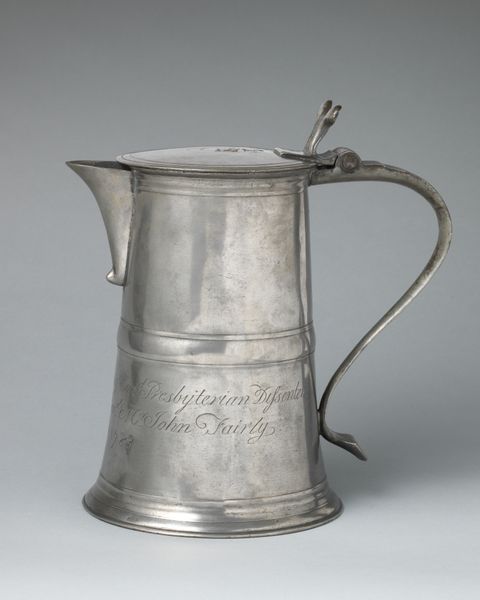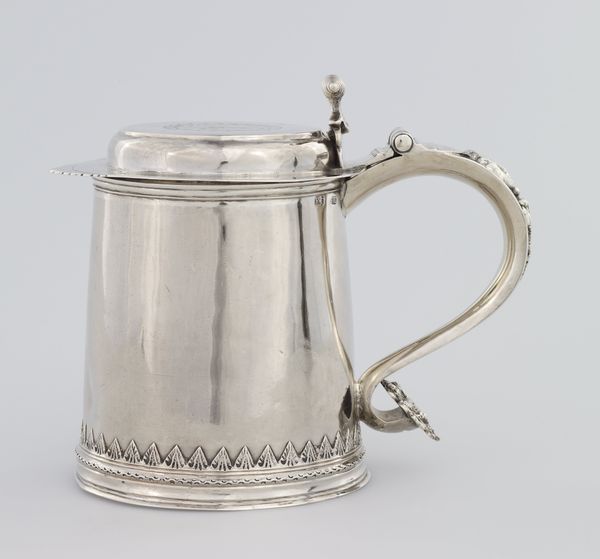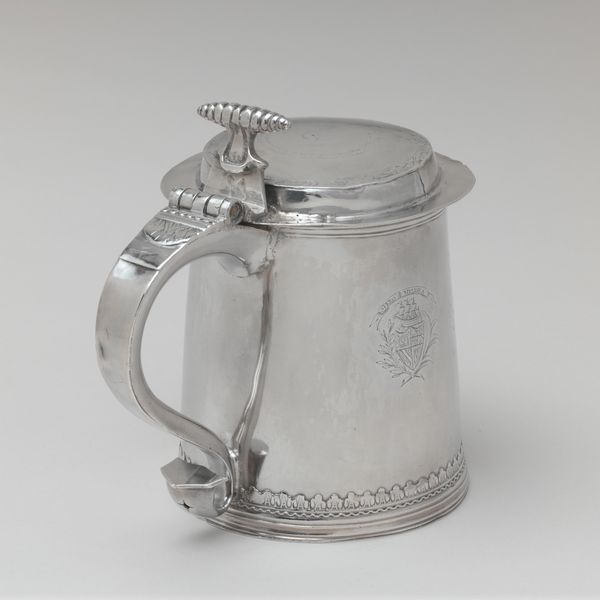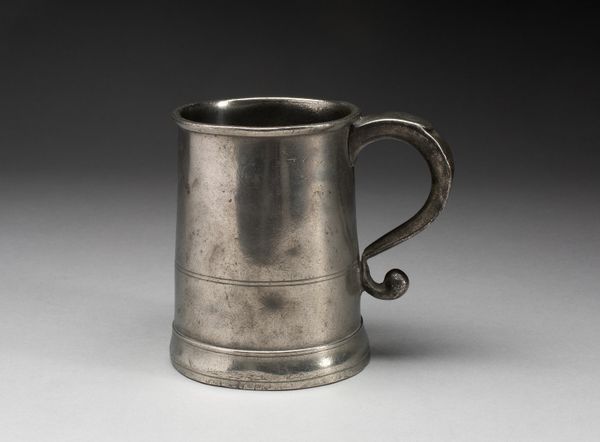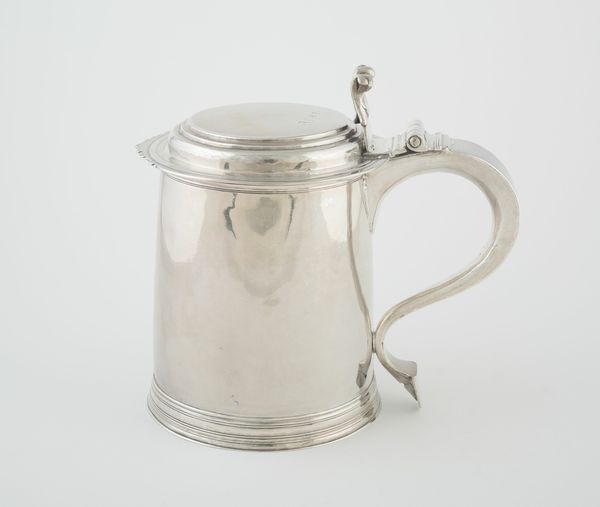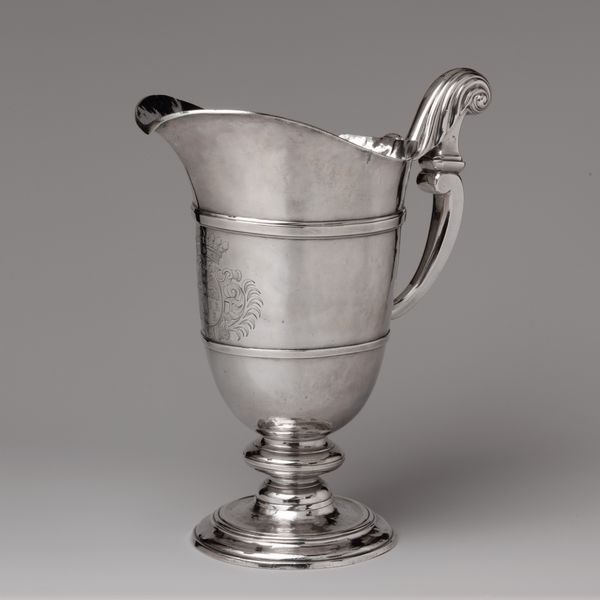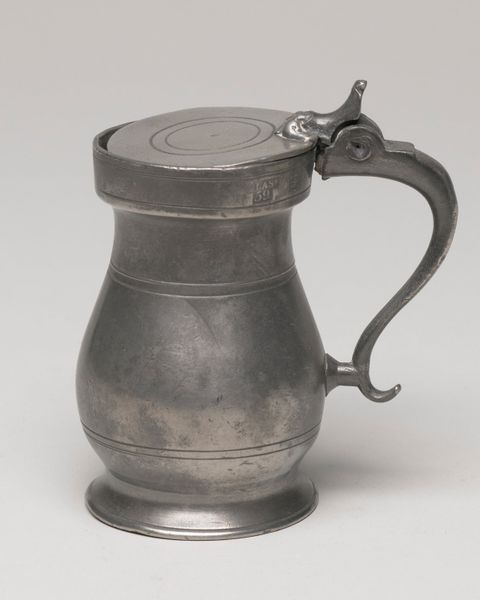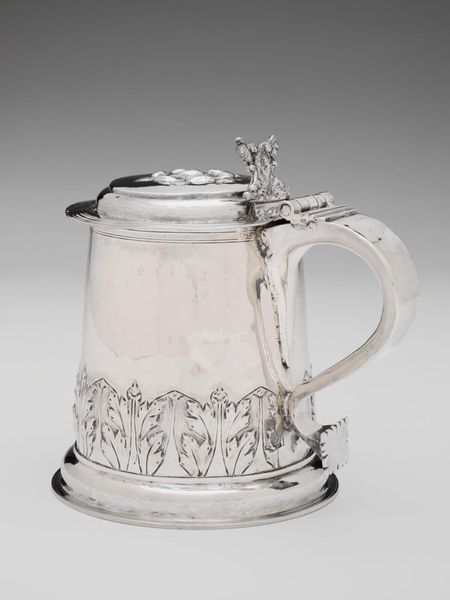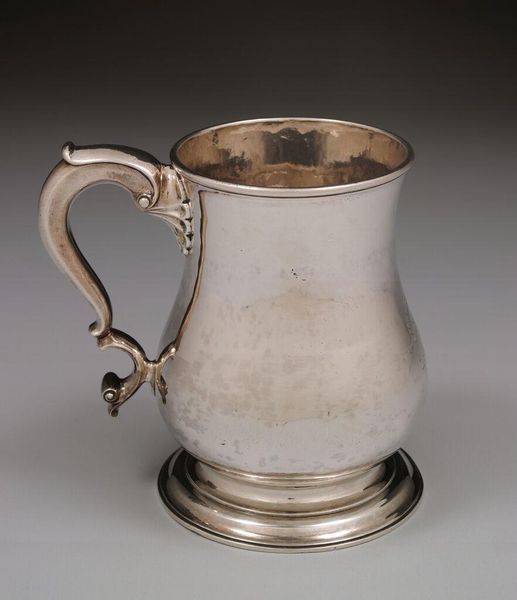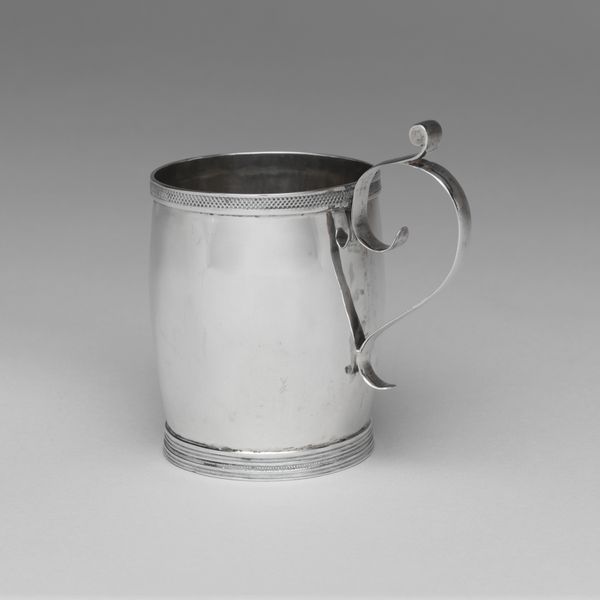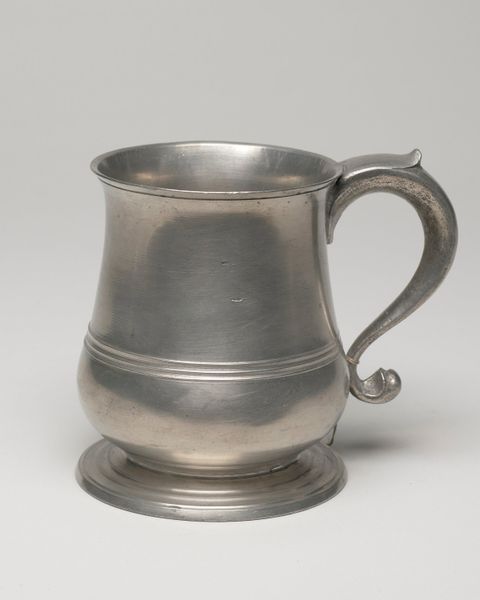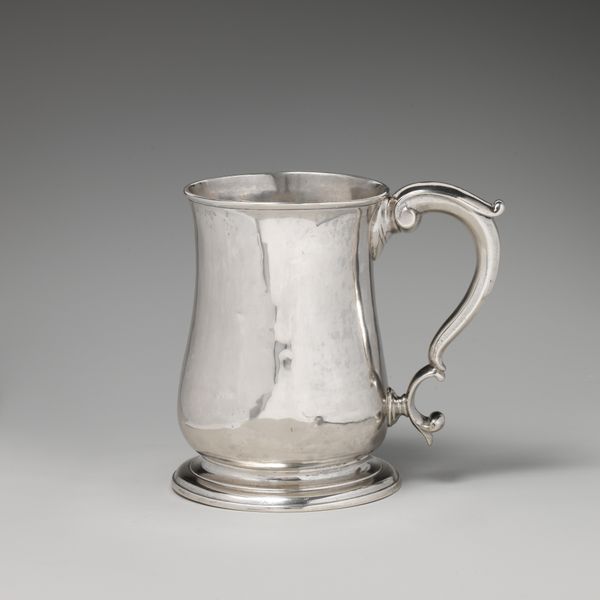
Tankard engraved with scenes of the Great Plague and the Great Fire of London 1673 - 1674
0:00
0:00
silver, sculpture
#
silver
#
baroque
#
sculpture
#
history-painting
#
decorative-art
Dimensions: Overall (confirmed): 7 3/8 × 9 × 6 in., 35 oz. 18 dwt. (18.7 × 22.9 × 15.2 cm, 1116.501g)
Copyright: Public Domain
Editor: This is a silver tankard, dating from 1673 to 1674. It's currently housed at the Metropolitan Museum of Art. What strikes me is the stark contrast between its beautiful baroque craftsmanship and the somber scenes it depicts: the Great Plague and the Great Fire of London. What stories do you see etched in this object? Curator: The tankard’s polished surface acts almost like a mirror, reflecting not just light but also the collective trauma of 17th-century London. Silver, often associated with wealth and prosperity, here becomes a vessel for communal memory of immense suffering. The scenes etched into it—bodies piled during the plague, buildings ablaze during the fire—aren't mere illustrations. Instead, they’re symbols of resilience in the face of devastation. Editor: So the imagery functions as more than just decoration? Curator: Precisely. Consider how objects like this helped people process historical events. Drinking from this tankard might have served as a constant, albeit painful, reminder of the past, perhaps promoting reflection on mortality and the fragility of life. In a way, the act of drinking from it transforms it into a ritual, re-enacting the collective experience of overcoming disaster. Do you see echoes of this in contemporary memorials? Editor: I think so. We create monuments and hold ceremonies to collectively remember tragic events. It makes sense this object might have served a similar function, though on a smaller, more personal scale. I find myself thinking about what symbols we use today to remember significant events, and what this says about us. Curator: Absolutely. And that constant re-evaluation, that conversation between the present and the past, is where art truly lives. Editor: I never considered decorative art having so much cultural significance! I am walking away from this discussion with a greater sense of understanding of our use of cultural symbolism.
Comments
No comments
Be the first to comment and join the conversation on the ultimate creative platform.
